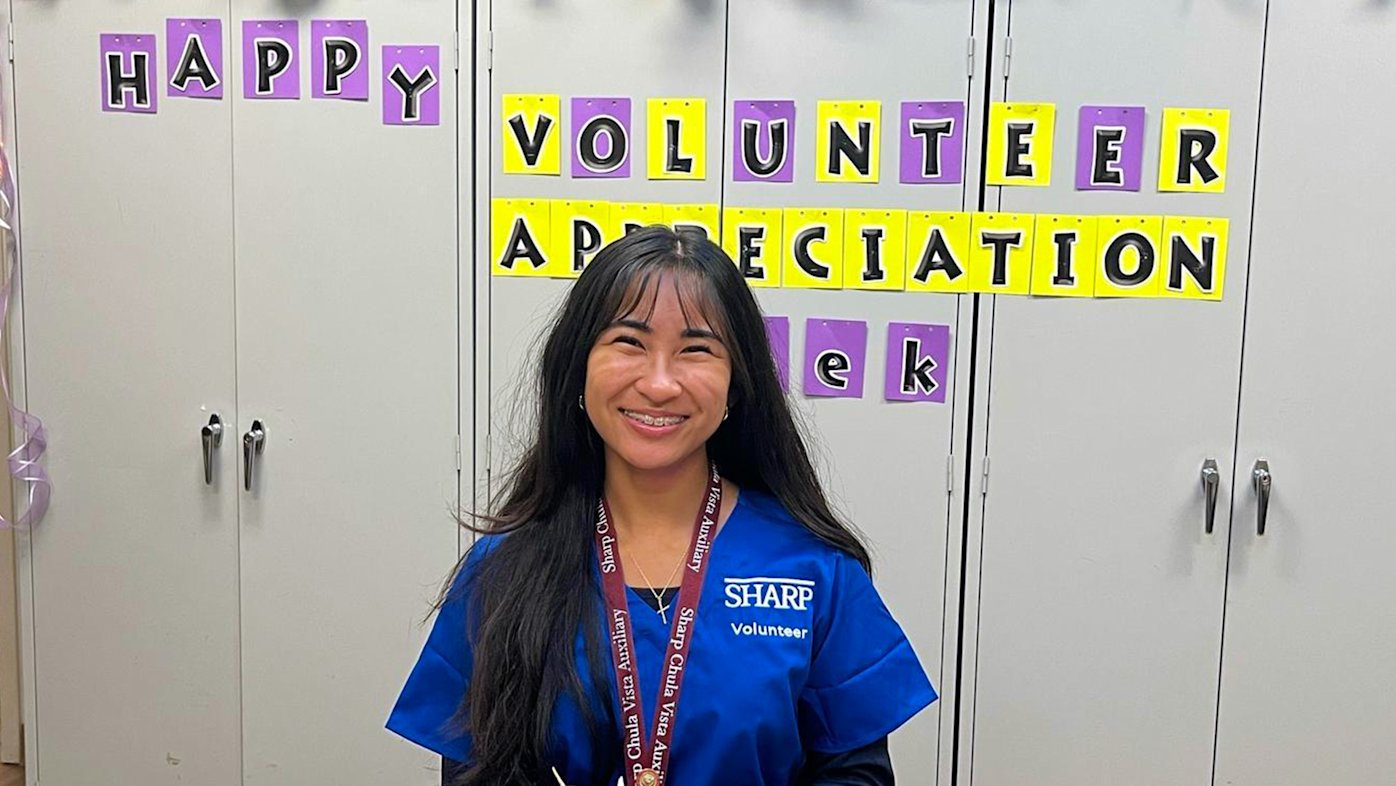
Student volunteer brings joy with wishing cranes
Carefully folded origami cranes carry messages of hope and healing, as one teen volunteer helps brighten patients’ days at Sharp Chula Vista Medical Center.
Joseph Purcell, 63, was at the right place at the right time — not only once, but twice. In early October, Joseph finished receiving treatment at a local hospital for complications from his prostate cancer. But when he was in the middle of being discharged, he suddenly experienced a stroke.
“Fortunately, his stroke occurred while he was still at the hospital,” says Leslie Purcell, Joseph’s wife. “So, he was able to get immediate care, but it was unexpected and scary.”
Once Joseph was stabilized, he was transferred to Sharp Grossmont Hospital’s post-acute care skilled nursing facility. He spent a week there recovering before transferring to the Sharp Allison deRose Rehabilitation Center, an acute care inpatient facility at the Sharp Metropolitan Medical Campus, to regain strength after the stroke.
Excellent planning makes all the difference
The rehab center team was informed that Joseph had an upcoming orthopedic appointment at another hospital. Thanks to Penny Huntrods, manager of inpatient rehab admissions, he was transferred early from the skilled nursing facility to rehab so he could adjust to his new environment before his appointment.
“When I learned about Mr. Purcell’s condition, I thought it would be nice to have him get settled here and start his therapies sooner,” says Huntrods. “We also modified his schedule to not interfere with his appointment later in the day.”
Penny’s help proved to be significant because the day after Joseph was admitted to rehab, he had another stroke and was immediately rushed to Sharp Memorial Hospital. Fortunately, the hospital is located on the same campus as the Sharp Allison DeRose Rehabilitation Center.
“Mr. Purcell experienced an acute ischemic stroke, which occurs when the brain does not receive sufficient blood flow,” says Dr. Robert Flynn, an interventional radiologist affiliated with Sharp Memorial. “He exhibited the BE FAST symptoms of speech difficulty and arm weakness.”
Dr. Flynn adds that an untreated ischemic stroke quickly causes permanent damage to brain cells, so it is crucial to seek medical attention immediately. The sooner blood flow can be reestablished to the brain, the more likely the patient will recover completely.
Extraordinary, immediate care saves lives
As an interventional radiologist, Dr. Flynn diagnoses and treats various conditions using imaging guidance, such as digital subtraction angiography, ultrasound and CT. To treat Joseph’s stroke, Dr. Flynn performed a thrombectomy, which involves guiding a small catheter into the brain to remove the blood clot from the blocked artery.
“My husband’s stroke made him unable to move the left side of his body,” Leslie says. “I was terrified, but Sharp Memorial’s stroke care team responded right away and explained everything that was going on.”
Leslie is also thankful Joseph got treated at Sharp Memorial, which is certified as an Advanced Primary Stroke Center by the Joint Commission in association with the American Heart Association (AHA) and American Stroke Association (ASA). With this recognition, Sharp Memorial’s goal is to start a thrombectomy on a patient in 90 minutes or less after experiencing a stroke. This provides stroke patients with the best chance of functional recovery.
A family grateful for treatment at Sharp
Leslie’s son and daughter echo her gratitude. They say they’re grateful for the excellent care their dad received from Sharp and won’t forget how kind the medical professionals were. They emphasized that they “can’t thank them enough” for the care providers’ quick action.
Joseph recovered at Sharp Memorial’s intensive care unit (ICU) before returning to the rehab center, where he received physical, occupational and speech therapy. “When Mr. Purcell first came here, he needed a lift device to move from surface to surface and two people to help him to walk, but by the time he was discharged, he was able to walk and even climb a flight of stairs with his wife’s help,” says Tabitha Bonney Rozeboom, a physical therapist at the Sharp Allison DeRose Rehabilitation Center.
In November, Joseph was able to return home. He’s now doing well and is continuing to receive outpatient physical and occupational therapy.
“We love to travel and look forward to doing that again as I get stronger,” Joseph says. “To all the people who helped me at Sharp, thank you for providing me with excellent care.”
Learn more about stroke care; get the latest health and wellness news, trends and patient stories from Sharp Health News; and subscribe to our weekly newsletter by clicking the "Sign up" link below.
Our weekly email brings you the latest health tips, recipes and stories.